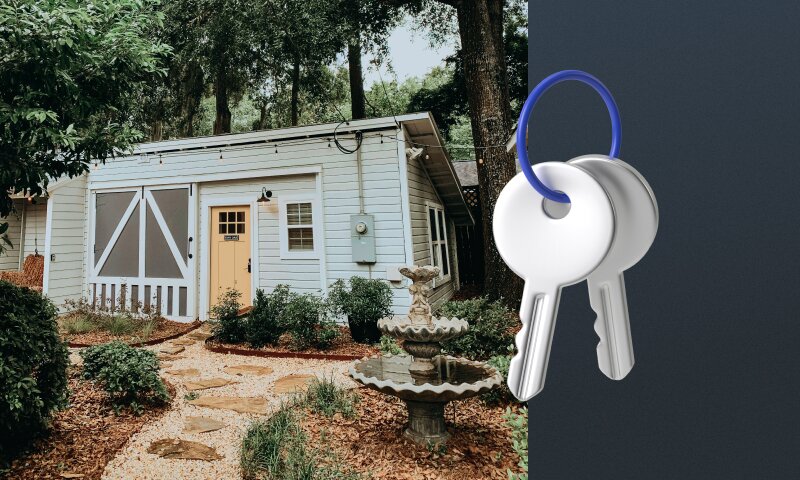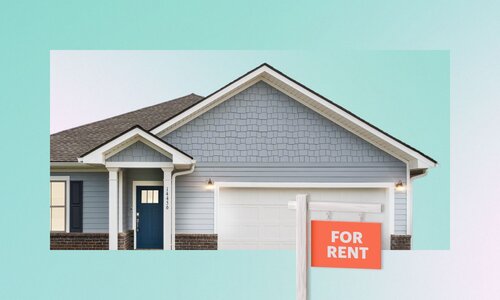In recent years, the concept of “home” has evolved, extending beyond traditional boundaries and redefining how we think about living spaces. One housing feature that has gained substantial attention is the accessory dwelling unit or ADU. These compact, self-contained living spaces can be used for extra income, multigenerational living, or enhancing your property’s value.
Here’s everything you need to know about ADUs.
What Is an Accessory Dwelling Unit or ADU?
Accessory dwelling units (ADUs) are secondary residential units or living spaces in a single-family home. These housing units are fully equipped with the necessary amenities for independent living, including a kitchen, bathroom, and sleeping area. ADUs can take various forms, such as standalone structures, converted basement apartments, guest houses, garages, or additions, providing property owners and real estate investors with versatile options for housing. ADUs are known by many names, including granny flats, accessory apartments, in-law units, mother-in-law suites, carriage houses, laneway houses, and secondary dwelling units.
Legally, an ADU is considered an integral part of the main home, and it cannot be independently bought or sold as a separate entity, as one could with a condominium, tiny house, or mobile home. ADUs can also impact property taxes, as they are typically assessed based on the total property value, including the value added by the ADU.
There has been a notable resurgence in the interest surrounding ADUs in recent years. Homeowners, builders, and communities have recognized the potential of ADUs to address various housing challenges and evolving living arrangements. This growing interest is fueled by housing affordability, increased urbanization, the desire for multigenerational living, and a focus on sustainable, space-efficient housing solutions.
What are the Main Features of an ADU?
The following are the main features and common traits of an Accessory Dwelling Unit:
- ADUs provide additional living space on a property separate from the main dwelling.
- They are self-contained units with an entrance, kitchen, and bathroom facilities.
- ADUs typically consist of at least one bedroom and a living area.
- These units can be detached from or attached to the main house or situated within the main dwelling, and they are known as interior ADUs.
- ADUs are often used by homeowners to generate rental income or to accommodate multigenerational living arrangements.
- They are typically smaller than the primary residence but provide complete living quarters.
- The creation and use of ADUs are subject to local zoning laws and building regulations, which can vary significantly from one area to another.
What are the Different Types of ADUs?
ADUs can offer flexible living arrangements and potential income streams. Here are the main types of ADUs to be aware of:
Detached ADUs
Detached ADUs are standalone structures separate from the primary residence on the property. They can be small backyard cottages, tiny houses, or custom-built units in the backyard or other suitable spaces. These units offer complete independence and privacy for occupants.
Attached ADUs
Attached ADUs are physically connected to the primary dwelling, typically through an extension or addition. They share some walls or spaces with the main house but have separate entrances and utilities. Attached ADUs are a convenient way to expand living space while maintaining a degree of connection to the primary residence.
Interior ADUs
Interior ADUs — sometimes called basement or attic apartments — are living spaces created within the existing structure of the primary home. Homeowners can transform basements, attics, or other unused areas into separate apartments or living spaces.
Garage Conversion ADUs
Garage conversion ADUs involve transforming a garage into a separate living space. This type of ADU is prevalent in locations where garages are underutilized. Converting a garage allows homeowners to maximize space and create an additional dwelling unit without building new structures.
What are the Benefits of ADUs?
In recent years, ADUs have gained popularity for their potential to address various housing needs and offer financial advantages to homeowners and real estate investors. Let’s talk about some benefits of incorporating ADUs into your residential property.
- Additional rental income: ADUs have the potential to generate extra short-term rental income and a higher return on investment. Homeowners can rent out the ADU to tenants, providing a steady stream of revenue that can help offset mortgage payments and other rental housing-related expenses.
- Multigenerational living: ADUs offer flexibility for multigenerational living arrangements. Families can house aging parents, adult children, or extended family members in the ADU while maintaining privacy and independence for both the primary residence and ADU occupants.
- Increased property value: The presence of an ADU can enhance the overall property value. The additional living space and income potential can make the property more attractive to potential buyers or investors.
- Affordable housing options: ADUs can help address the growing demand for affordable housing. Renting ADUs can provide cost-effective housing for individuals, couples, or small families, helping ease the housing affordability crisis in many communities.
What You Need to Keep in Mind When Building an ADU
Here’s what homeowners and real estate investors need to keep in mind when building an ADU.
- Zoning and building codes: Understanding local zoning ordinances and building codes is crucial when planning a new construction. These regulations dictate the size, placement, and design of ADUs, ensuring they meet safety and community standards.
- Financing options: Building an ADU involves expenses for construction, building permits, and design. Consider exploring options such as home equity loans, personal loans, or ADU-specific financing programs.
- Design and layout: The design and layout of an ADU are critical factors in maximizing its functionality and aesthetic appeal. Careful planning is required to optimize the space for comfortable living and to meet local building code requirements. Decisions about the floor plans, number of rooms, bathrooms, and the overall layout should align with the intended use of the ADU.
- Permits and inspections: Homeowners must navigate the permit and inspection process, which varies depending on the location. Proper permitting is essential to ensure that the ADU complies with local regulations. Inspections verify that the construction adheres to safety and building standards. It’s important to be aware of the permitting timeline and requirements to avoid delays in the construction process.
- Neighborhood concerns: Neighbors may have concerns about adding an ADU, such as increased traffic, noise, or changes to the neighborhood’s character. Homeowners should consider engaging with neighbors early in planning, addressing their concerns, and adjusting the ADU’s design or intended use as needed. Being a good neighbor and considering the neighborhood’s well-being can help alleviate concerns.
Accessory dwelling units can offer a versatile and valuable solution for modern housing needs, providing additional living space, generating rental income, supporting multigenerational living, and enhancing property value. Understanding the types, benefits, and considerations of ADUs is essential for homeowners and real estate investors looking to maximize their property's potential.









